Shippensburg University
Hall of Presidents
Charles E. Patterson
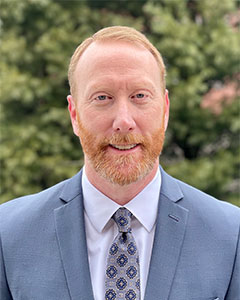
Read More
Charles E. Patterson has devoted his career to serving higher education. In nearly two decades, he has served in roles from instructor to executive with the U.S. Department of Education and university president. He earned his Bachelor of Science degree in biochemistry from Mississippi State University and his Ph.D. in biomedical sciences from the University of Texas, Southwestern Medical Center in Dallas. He is a strong advocate for the role that universities serve in advancing civic engagement, community development, and economic development.
President Patterson began his tenure as Interim President in July 2021 and appointed as the 18th President of Shippensburg University May 2022. Prior to Shippensburg, he served as president of Mansfield University.
Before leading Mansfield, Patterson served as senior advisor for outreach at the US Department of Education’s Office of Federal Student Aid. He began his higher education career in 2003 as assistant director for sponsored programs at Baylor University. Six years later, he joined Georgia Southern University as chair and vice president for research and economic development of the university’s Research and Service Foundation, Inc. Next, Patterson was appointed interim president of Georgia Southwestern State University in January 2015, a position he held for more than two years before joining the US Department of Education.
Laurie Carter
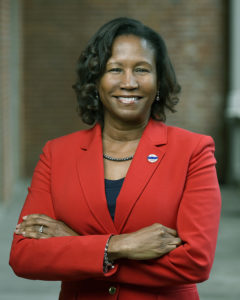
Read More
Laurie Carter was the university’s first woman and first African-American president. Carter grew up in Rutherford, New Jersey, and earned a bachelor of science degree from Clarion University, a Master’s degree from William Paterson University, and a law degree from Rutgers University.
During her tenure as president, the university implemented a first-year experience program, a program for first-generation college students, and an executive level Chief Diversity Officer. She also launched a comprehensive Student Success Center; created the university’s Centers of Excellence in downtown Shippensburg, and renovated the old steam plant building as a home for the State System’s first School of Engineering program. Carter served as president during the Covid-19 pandemic of 2020-2021. She departed in June 2021 to become the president of Lawrence University in Appleton, Wisconsin.
Dr. George F. “Jody” Harpster
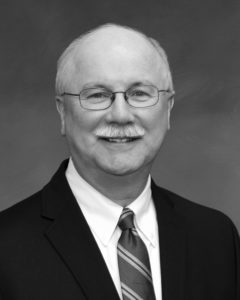
Read More
George F. “Jody” Harpster graduated with a bachelor’s degree from Juniata College, earned a Master of Science in Counseling and College Student Personnel from Shippensburg University and a PhD in Adult Higher Education from the University of North Carolina at Chapel Hill. After working for 21 years in the UNC system, Harpster returned to Shippensburg in 1995 as the vice president for Student Affairs for 10 years and then served in a variety of administrative roles, including twice as interim president from June 2005-February 2007 and May 2013-January 2015. He was named the 16th president on January 22, 2015.
During his tenure, the university developed several new academic programs including the university’s first doctoral programs and the State System’s first degree in electrical engineering. In addition, the university finalized construction of and opened the Luhrs Performing Arts Center, built the Student Recreation Center and concluded the most successful fundraising campaign in State System history. Harpster retired in 2017.
Dr. William “Bill” Ruud
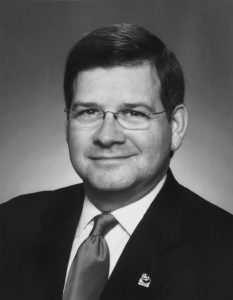
Read More
William “Bill” Ruud was born in 1952 in North Dakota. He graduated with a Bachelor’s degree from the University of North Dakota, and earned his M.B.A. and Ph.D. from the University of Nebraska-Lincoln. He also served in the United States Army as an Armor and Adjutant General Officer from 1978-1981.
During his tenure as president, Ruud focused on the improvement of campus facilities, including the renovation of campus athletic fields, the Ceddia Union Building, the Huber Arts Center, and the Reisner Dining Hall. He also was responsible for a $200 million dollar initiative to replace many of the campus’s traditional dormitories with apartment-style residence halls. Ruud managed significant political and economic challenges during his tenure, including the Great Recession of 2008-2009 and significant cuts in state appropriations under Governor Tom Corbett. Ruud departed in May 2013 to become the president of the University of Northern Iowa.
Dr. Anthony “Tony” Ceddia
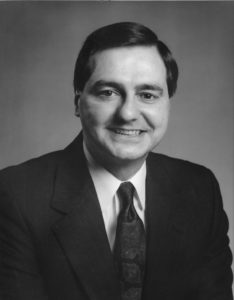
Read More
Anthony “Tony” Ceddia was Shippensburg University’s longest-serving president. Born March 4, 1944, in Boston, Massachusetts, Ceddia earned his bachelor’s and Master’s degrees from Northeastern University, and his doctorate in higher education administration from the University of Massachusetts. In the second year of his administration, on July 1, 1983, the Pennsylvania General Assembly passed Act 188 creating the Pennsylvania State System of Higher Education and renaming Shippensburg State College as Shippensburg University. Ceddia focused his time as president on transforming Shippensburg into a modern comprehensive university, strengthening the institution’s academic reputation, improving “town and gown” relations, promoting diversity initiatives, and raising funds to improve campus facilities.
During his tenure as president, the university created the Honors Program and expanded the scope of the Learning Center, revised the general education curriculum, expanded its computer and technology programs, and established the Office of Minority Students Affairs (renamed Multicultural Student Affairs in 1994). New construction during Ceddia’s administration include the Math and Computer Technologies wing of the Dauphin Humanities Center, the John L. Grove College of Business, the Grace B. Luhrs University Elementary School, the Cora I. Grove Spiritual Center, and the H. Ric Luhrs Performing Arts Center. Ceddia retired at the end of the 2004-2005 academic year. In the summer of 2005, the Cumberland Union Building was renamed the Ceddia Union Building in his honor.
Dr. Gilmore Seavers
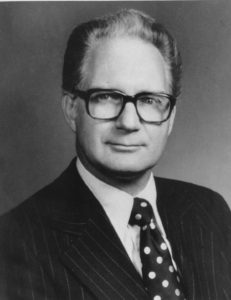
Read More
Gilmore Seavers was born in Newville, Pennsylvania, in 1917. He graduated with a bachelor’s degree from Shippensburg University in 1938, a Master’s degree from Duke University, and a Ph.D. from Pennsylvania State University. He served as an officer in the United States Army Air Force during World War II, and as the first superintendent of the Cumberland Valley School District. He held a variety of administrative roles at the college starting in 1957. Seavers took office at a time of rapid growth in the campus’s faculty, student body, and facilities. The Franklin Science Center, Dauphin Humanities Center, Heiges Field House, Cumberland Union Building, Seth Grove Stadium, and Mowery Hall all opened during his time in office.
During his tenure as President, Seavers oversaw the college’s 100th anniversary celebration in 1970-1971, and supported initiatives to increase the diversity of the student body including the creation of the PREP and ACT 101 Programs. He also collaborated with APSCUF in the creation of the Shippensburg University Foundation and raised millions of dollars for the school’s endowment. Women’s sports also grew during his tenure, increasing in number from three to nine teams. Throughout his time as president, Seavers dealt with economic challenges caused by a severe state budget crisis that persisted through the 1970s. Seavers retired in 1981, but continued to be an active advocate and fundraiser for the school and community organizations, including raising $1.5 million to support the construction of the Cora I. Grove Spiritual Center on campus. Gilmore Seavers died in 1999, and Seavers Hall was named in his honor in 2012.
Dr. Ralph Eby Heiges
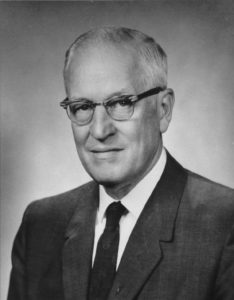
Read More
Ralph Heiges was born in Shippensburg, Pennsylvania in 1905. His father, Jesse S. Heiges, served as dean of instruction at the Cumberland Valley State Normal School, and the family moved into an Old Main apartment when Heiges was a young child. Heiges attended the campus lab school, Shippensburg public schools, and then graduated from Shippensburg State Teachers College in 1923. He earned a bachelor’s degree from Ursinus College, and his Master’s and doctoral degrees from Columbia University. He returned to campus in 1955 to become dean of instruction before becoming president the following year.
Heiges assumed office at a time when the school experienced explosive growth, surging from 924 undergraduate students in 1956 to 3,550 in 1970. Heiges also oversaw the transformation of Shippensburg State Teachers College into Shippensburg University (renamed in 1960), including the creation of graduate studies, and growth of liberal arts, business, and professional programs. The school’s physical plant also grew rapidly, including the construction of seven new residence halls, two dining halls, and the new Ezra Lehman Memorial Library. Heiges retired in 1970 and died in 1987. Heiges Field House was named to honor both him and his father.
Dr. Harry L. Kriner
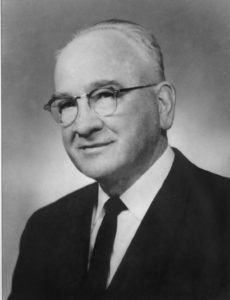
Read More
Harry Kriner was born in 1894 in DuBois, Pennsylvania. He graduated from Lock Haven State Normal School and began his career teaching in a one-room schoolhouse in DuBois. He subsequently earned degrees from the University of Pittsburgh and Columbia University, and his doctoral degree in Education from Penn State University. He also served as a chauffeur with the United States Army in the First World War.
During his tenure as President, Shippensburg State Teachers College grew rapidly due to the influx of World War Two veterans attending the school on the G.I. Bill. He oversaw the conversion of the Old Gym into a student union, rededicated as Stewart Hall in 1950, and the opening of Memorial Auditorium in 1951. After his retirement, Kriner became the first mayor of Shippensburg Borough in 1962. Kriner Hall, constructed in 1957, was named in his honor. He died in 1973.
Dr. Levi Gilbert
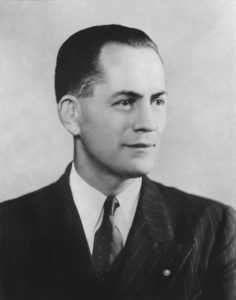
Read More
Levi Gilbert was born in Table Rock, Pennsylvania in 1892. He graduated from the Cumberland Valley State Normal School in 1917, and earned a bachelor’s degree from Franklin and Marshall College, a Master’s degree from the University of Pennsylvania, and his doctoral degree from the University of Pittsburgh. From 1922-1927 he worked at Shippensburg State Teachers College as the Dean of Men and a science instructor. When he was selected to become President of Shippensburg State Teachers College in 1945, he was serving in Europe as an officer with the U.S. Army’s Allied Military Government Branch.
During his tenure, the school grew rapidly with the enrollment of returning servicemen using the G.I. Bill. By 1947, veterans outnumbered non-veterans by two-to-one on campus. Gilbert’s time as president also witnessed an era of great success for the school’s athletic teams. He resigned as president in 1948. Gilbert Hall was renamed in his honor in 1947. He died in 1973.
Dr. Albert Lindsay Rowland

Read More
Albert Rowland was born in Philadelphia in 1882, and graduated from the Philadelphia School of Pedagogy and Temple University. He earned his doctoral degree from the University of Pennsylvania. Rowland successfully led the university through the challenges of the Great Depression and World War Two.
During his tenure, the school faced declining enrollments and many years of significantly reduced state support, but it also tapped state and federal funds creating jobs for the unemployed. New construction projects included a new gymnasium (Alumni/ Henderson Gymnasium), a new lab school (Rowland Hall), a new science building (Shearer Hall), as well as other improvements to campus facilities. The college also earned its first accreditation from the Middle States Association of Secondary Schools and Colleges in 1939. President Rowland resigned in 1945 after having guided the institution successfully through what he termed “years of critical difficulty” and laid the groundwork for postwar growth. In his retirement, he remained active in civic organizations and taught at Beaver College until his death in 1959. Rowland Hall (originally the Rowland Laboratory School) was named in his honor.
Dr. Ezra Lehman
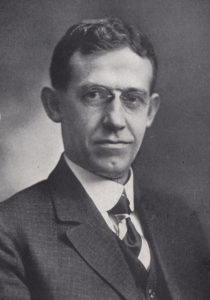
Read More
Ezra Lehman was born in 1871 in Staufferstown, Pennsylvania. He graduated from the Cumberland Valley State Normal School in 1889, and after teaching a year in a one-room schoolhouse, he attended Bucknell University. In 1896, he became a teacher of English at the Cumberland Valley State Normal School, leaving in 1900 to earn his doctorate at the University of Pennsylvania, and then returning upon his election as principal in 1913.
Lehman led the college through the First World War, supporting the war effort while insisting that the school must continue its mission of training teachers even during wartime. He also negotiated the state’s purchase of the school in 1917, and he spearheaded efforts to grow, modernize, and strengthen the schools teacher training programs. These included transforming the lab school into a Teacher Training School, imposing stricter entrance requirements, requiring a four-year course of study for all students, and building a collaborative partnership with the Shippensburg School District. Under his leadership, Shippensburg became the state’s first certified teachers college in 1926, and began operating as Shippensburg State Teachers College in 1927. Ezra Lehman died suddenly while vacationing in Atlantic City in 1931. Shippensburg’s Ezra Lehman Memorial Library was named in his honor.
Dr. Samuel Albert Martin
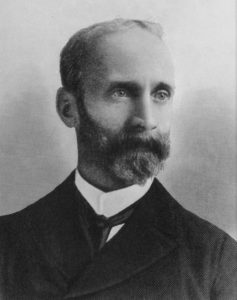
Read More
Samuel Martin was the first principal to occupy the president’s residence on campus rather than living in an apartment in Old Main. He was born in Cannonsburg, Pennsylvania in 1853. He graduated from Westminster College and Lafayette College, and earned his Doctor of Divinity degree from the Western Theological Seminary. Martin did not possess a background in teacher education, and lacked experience managing a public normal school, resulting in a difficult tenure as principal.
During his years in office, the number of students enrolled at the school declined by half. Although he was invited to continue as president, he resigned in 1913 and accepted a professorship at Lafayette College. The president’s residence on campus is called the Martin House in his honor.
Dr. George Mifflin Dallas Eckels
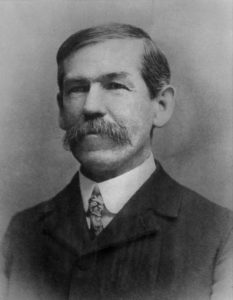
Read More
George Eckels was born near New Kingston, Pennsylvania in 1844, Eckels attended Millersville State Normal School and earned both a Master’s degree and doctoral degree from Pennsylvania College in Gettysburg. He also served two terms as a Democratic member of the Pennsylvania House of Representatives representing Cumberland County from 1884 to 1888.
During his tenure, he built strong relations with the community and alumni. He doubled the school’s enrollment, increased the faculty from eleven members to twenty-one, improved the school’s graduation rate, and expanded the campus with the construction of a new dormitory for women (Horton Hall), and a new state-of-the-art gymnasium (Stewart Hall). While still serving as principal, he contracted pneumonia and died in his Old Main apartment on February 14, 1907. Eckels Field was named in his honor.
John Frederick McCreary
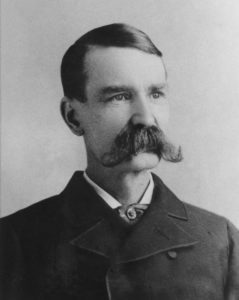
Read More
John McCreary was born in 1840 in Gettysburg, Pennsylvania. He graduated from the Pennsylvania College, and served in the Civil War as a captain of Company B, 138th Regiment, Pennsylvania Volunteers—a unit he largely recruited from Pennsylvania College students.
In 1883 he was elected Chair of Languages at the Cumberland Valley State Normal School, and then in 1886 he was elected as the school’s principal. McCreary struggled to run the school with little support from the board of trustees, a reduced state appropriation, and mounting financial troubles. He was in office in 1887 when the school’s inability to pay its creditors led to a sheriff’s auction of the school’s furnishing and supplies. McCreary’s health began failing in 1888, and he resigned as principal on May 10, 1889, but continued as a faculty member to the year’s end. He died in 1891.
Samuel B. Heiges
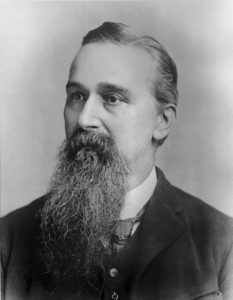
Read More
Samuel B. Heiges was born in Dillsburg, Pennsylvania in 1837. He received his education from public schools in the Dillsburg area. In 1863 he was elected the Superintendent of York County School , and then in 1878 he ran and won election as the Democratic Party candidate for the office of Prothonotary in York County.
During his tenure, he focused on increasing the number of students attending the school and improving the school’s finances. Though he was invited to continue as principal, he declined and departed 1886 to lead the Soldiers Orphan School at White Hill in Cumberland County. Heiges died in 1915.
B.S. Potter
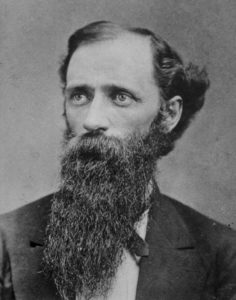
Read More
Prior to arriving in Shippensburg, Potter was the Chair of Mathematics at North Missouri State Normal School in Kirksville, Missouri. Potter arrived to find only ninety-nine students enrolled at the school: thirty students living on campus, thirty commuting to take classes, and thirty-nine children enrolled at the model school. With so few students, the school struggled to pay its bills, and all faculty and staff—including Potter—saw their salaries cut by the board in 1880. Though invited to continue as principal in 1882, Potter declined and accepted a position at the Edinboro Normal School.
Isaac Newton Hays
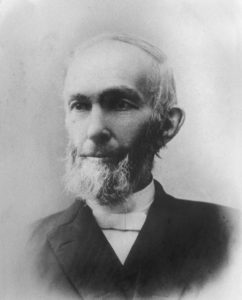
Read More
Isaac N. Hays was born in Canonsburg, Pennsylvania in 1827. He was a graduate of Jefferson College and the Allegheny Theological Seminary. Prior to becoming principal he served as the pastor of the Middle Spring Presbyterian Church, and helped to found both the Second Presbyterian Church in Chambersburg, and Wilson College.
During his tenure, Hays proved successful at mobilizing the local community to contribute their time and money to support the school. An appeal he made in 1876 raised $35,000 that helped to ease the school’s debts. The state also began allocating funds for the operation of state normal schools in 1877 which further improved the schools finances. In 1878, Hayes resigned to become the minister of the Central Presbyterian Church of Allegheny. He remained at the church until his death in 1894.
George Petrie Beard
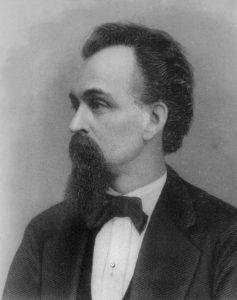
Read More
George Beard served as the first principal of the Cumberland Valley State Normal School. Born in Orange, Vermont in 1834, he attended public schools followed by his secondary education at the Barre Academy. He attended college at the University of Vermont where he earned both a bachelor’s and a Master’s degree.
Beard’s tenure as principal started in the fall of 1872, and he oversaw many of the preparations to recruit and prepare for the school’s opening in April 1873. The school opened to great fanfare with a class of 217 students, but struggled during its first years to operate the school due to significant debt and poor credit. Student complaints and rumors of financial mismanagement led to an investigation by state officials in 1875. Beard resigned in 1875 and subsequently served at the Pennsylvania State Normal Schools in California and Lock Haven. He died in 1911.
Get In Touch
- Archives and Special Collections | specialcollections@ship.edu
- Alumni | alumni@ship.edu
Phone | (717) 477-1201
Shippensburg University
1871 Old Main Drive
Shippensburg, PA 17257
Shippensburg University is located on Susquehannock land, land that originally belonged to the Seneca-Cayuga Nation. We remain committed to working alongside their elders and youth to restore the sovereignty of all Indigenous and First Nation peoples.
What is a Land Acknowledgment Statement?
A Land Acknowledgment is a formal statement that recognizes and respects Indigenous Peoples as traditional occupants of this land and the enduring relationship that exists between Indigenous Peoples and their traditional territories.